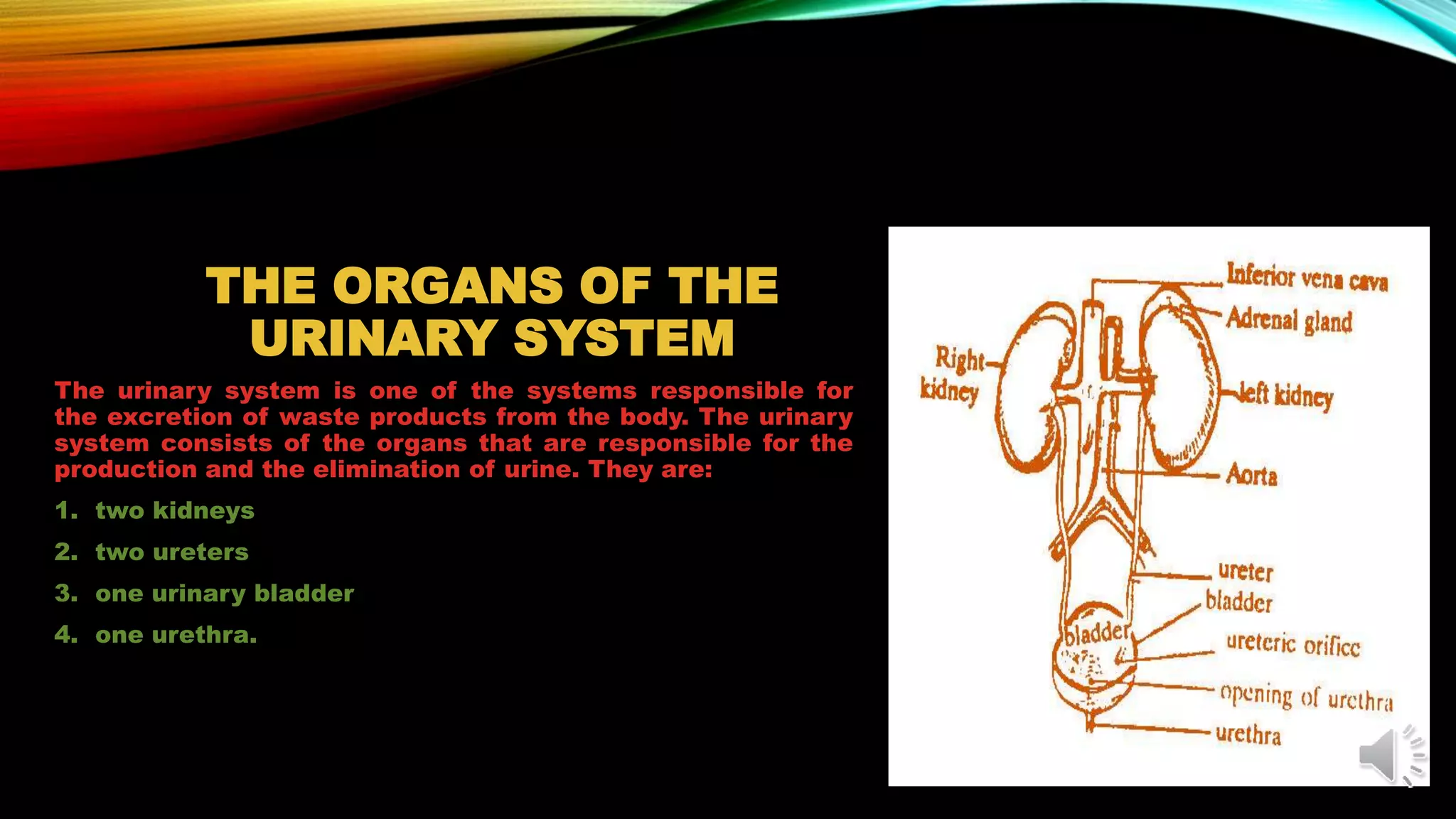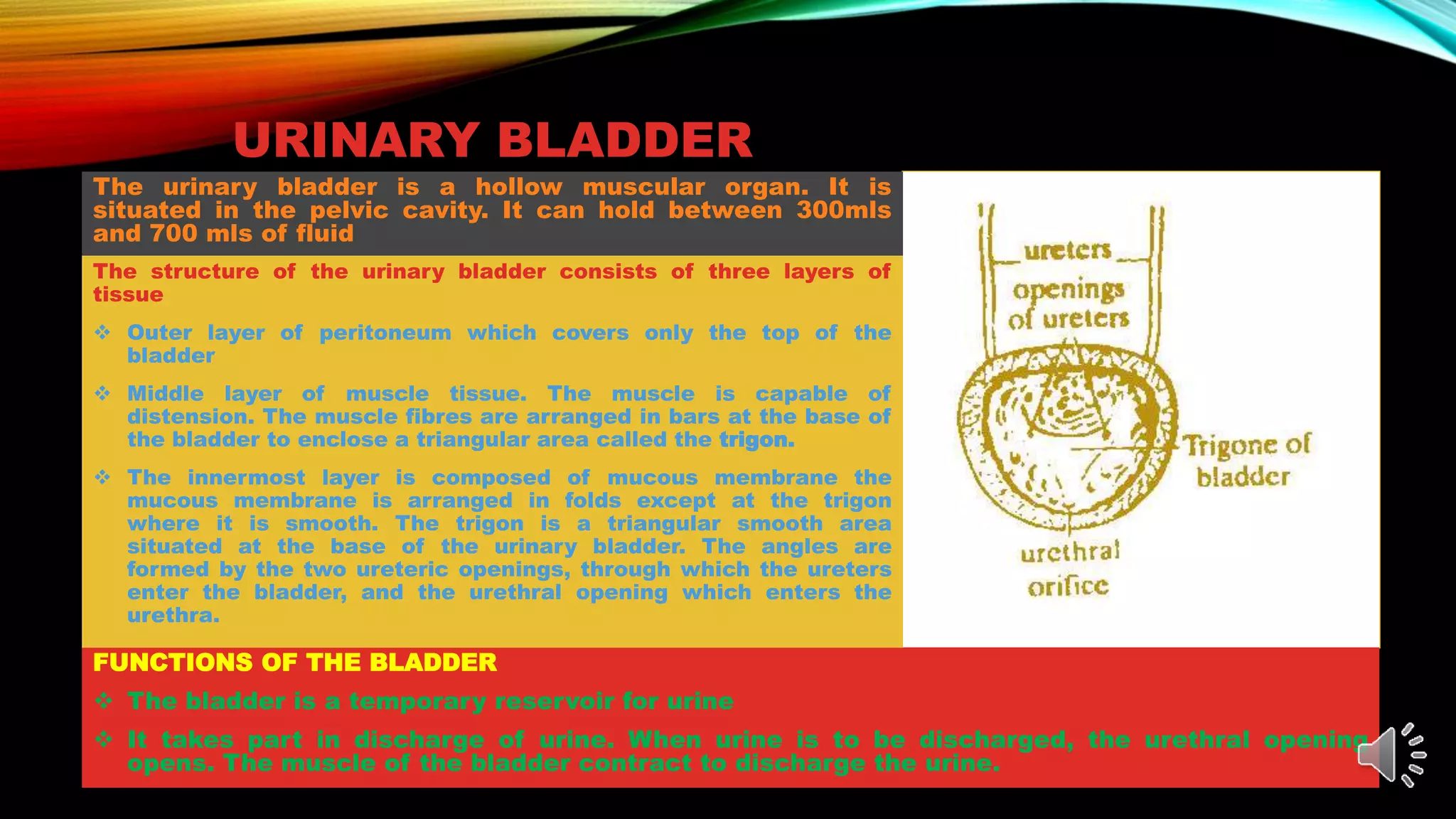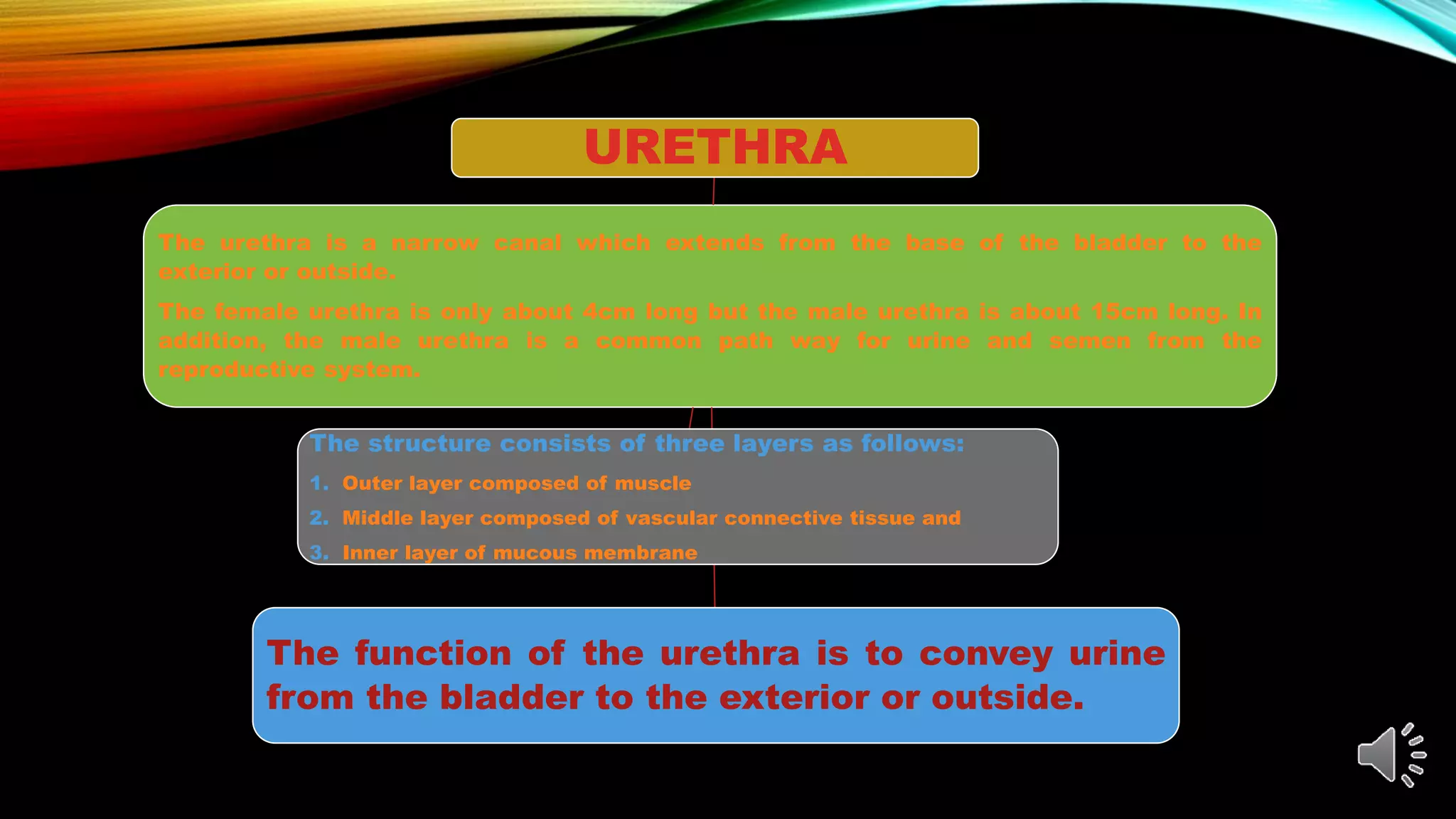The urinary system comprises two kidneys, two ureters, one urinary bladder, and one urethra, responsible for urine production and waste excretion. Kidneys have macroscopic and microscopic structures, with nephrons as the functional units that filter blood and form urine through filtration, reabsorption, and secretion. The ureters transport urine to the bladder, which serves as a temporary reservoir before the urethra discharges urine externally.















